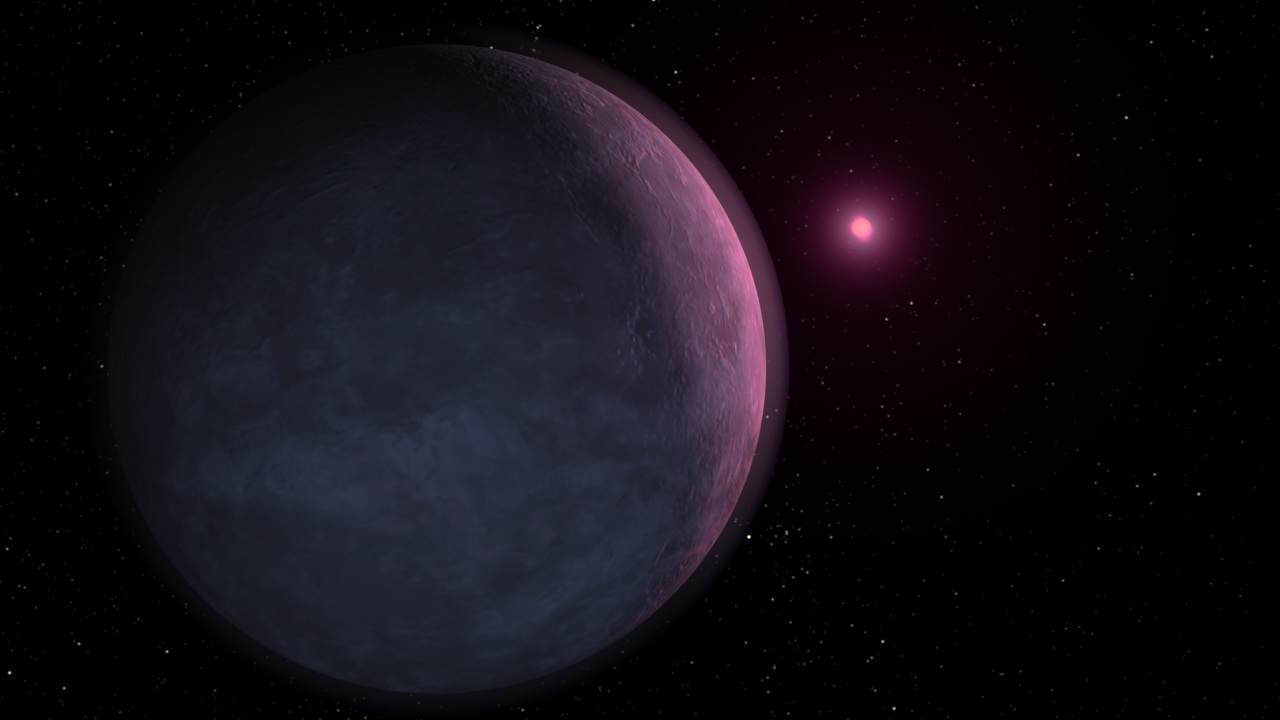Most of the planets found to date have been massive and orbiting their parent stars at a fraction the orbit of Mercury – the hot jupiters. They’re interesting to astronomers, but the big goal is going to be finding Earth-mass planets orbiting other stars. To do this, astronomers are looking for less massive stars, where the effects of gravity from a smaller, Earth-sized planet will be easier to spot. Today, an international team of astronomers announced they have found a planet with only 3 times the mass of the Earth orbiting a tiny star that can barely support nuclear reactions.
The announcement of this new planet, known as MOA-2007-BLG-192Lb, was made at the 212th meeting of the American Astronomical Society held in St. Louis from June 1-5, 2008. Researchers from several universities, including the University of Notre Dame presented their findings.
The star is known as MOA-2007-BLG-192L, and it’s located about 3,000 light-years away. It’s probably not actually a star, with only 6% the mass of our own Sun. These objects are classified as brown dwarfs, because they don’t have enough mass to sustain nuclear reactions in the core. I say “probably” because the uncertainty of the observations might put it into the very low end of a hydrogen-burning star.
Researchers found the planet and star using the gravitational microlensing technique. This is where two stars line up perfectly from our point of view here on Earth. As the two stars begin to line up, the foreground star acts as a lens to magnify and distort the light from the more distant star. By watching how this brightening happens, astronomers can learn a tremendous amount about the nature of both the foreground and background star.
In this case, there was an additional gravitational distortion from the planet orbiting the foreground star MOA-2007-BLG-192L, which astronomers were able to tease out in their data.
This technique demonstrates the gravitational microlensing might be one of the best ways to find Earth-mass planets. In fact, the researchers think the technique will turn up the first one. Here’s David Bennett, from the University of Notre Dame: “I’ll hazard a prediction that the first extra-solar Earth-mass planet will be found by microlensing. But we’ll have to be very quick to beat the radial velocity programs and NASA’s Kepler mission, which will be launched in early 2009.”
Unfortunately, the lensing events can only happen one time. The foreground star will probably never be seen again since it was only revealed by the two stars lining up. Astronomers have to work fast to get all their data collected.
Original Source: University of Notre Dame News Release


“”I’ll hazard a prediction that the first extra-solar Earth-mass planet will be found by microlensing. ”
That would be disappointing in my opinion. Having the first Earth-mass exoplanet detection be a fleeting glimpse of an event with no possibility for follow-up study would be a bit of a let down in comparison to a radial velocity find which we could then train all of our equipment on over a long period of time to really nail it down and study it well.
Not saying that it wouldn’t still be a momentous and important achievement though…
I agree with astrofiend. Of course it would be amazing to find one no matter how it was found.
Large or small doesn’t make a difference to me. I’m more interested in the composition, and atmosphere. Especially a planet with a large amount of water. Be it 9 times larger than earth or not. To me, this would be a much bigger find than one the size of Mars or Earth.
julst a quick comment,
The discovery of jupiter sized planets so close to their mother star was a suprise and not expected. Planetary systems were anticipated to be like our sytem. It was believed that the radiant energy from the central star pushed out matter, keeping the inner planets from getting too big.
Now new theories are being proposed that would allow large planets to migrate inward to the central star. (A theory created after the fact should be recognized as a weak theory).
(It is my belief that our sun exploded 5 billion years ago and stripped the inner planets of their atmospheres. This explains the evidence of the isotope of “strange xeon” and the dispursal of angular momentium of our solar system out toword Jupiter and provides the material for the astroids and explains the loss of the would be planet between jupiter and mars. ).
This is one of my favorite subjects. I only wish I was 40yrs younger so I would be around for the upcomming world discoveries.
I’ll leave it to my son to fill me in when he joins me in the other realm.
David Bennet’s prediction and Astrofiend’s comment on how such a fleeting glimpse would be received is interesting.
I had thought that only massive objects of stellar size provided enough light-bending for a noticeable effect. (I don’t know the equations for the lensing effect.)
In this article, the planetary system is between us and a further star. Could microlensing also provide evidence of planets around the star that is furthest away in the alignment? (Has it?)
David